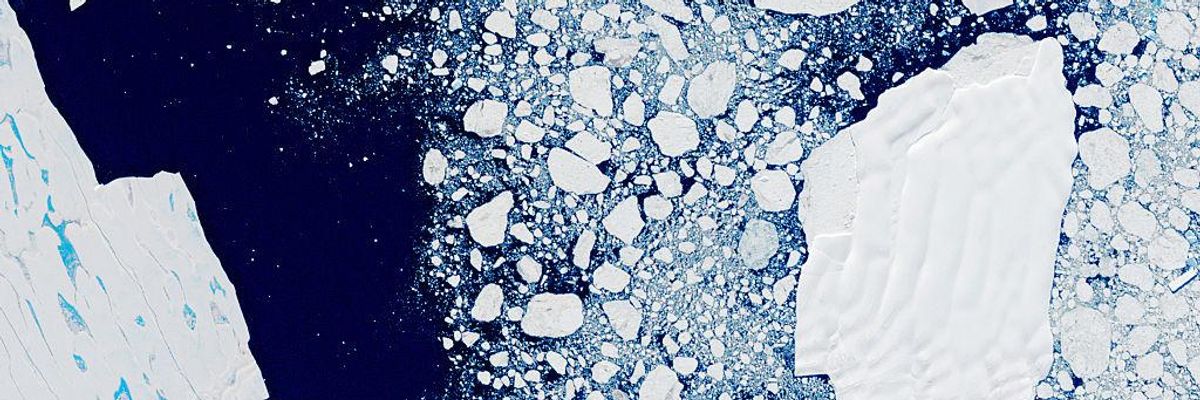The East Antarctica Ice Sheet, which is roughly the size of the United States, was long thought to be relatively stable due to its magnitude even as the warming climate caused other glaciers to recede--but a new study warns that without sufficient climate action, the ice sheet is vulnerable to melting and causing sea levels to rise significantly over the long term.
After analyzing what happened to the glacier during warmer periods of the planet's past and the current state of the ice sheet, researchers from Australia, Britain, France, and the U.S. concluded that if policymakers limit the heating of the planet to 2deg Celsius above preindustrial levels, the East Antarctica Ice Sheet would melt enough to add 1.6 feet to sea levels by 2500.
Failing to limit heating to 2deg would mean a 16.4-foot sea level rise over the same period, according to the study.
"Beyond 2100, high-emissions scenarios generate increased ice discharge and potentially several meters of sea level rise within just a few centuries, but substantial mass loss could be averted if the Paris Agreement to limit warming below 2deg Celsius is satisfied," reads the study, which was published in Nature Wednesday.
The researchers analyzed sediments on the seafloor surrounding the world's largest ice sheet and found that the glacier collapsed about three million years ago, when the Earth was 2deg to 4deg warmer than it is now. It also retreated by roughly 400 miles about 400,000 years ago when the planet was at least 1deg warmer.
Satellite images have shown that the ice sheet is gradually retreating and becoming thinner in areas where ocean water is warmer--one of the consequences of continued fossil fuel emissions and the heating of the planet.
The warming of the ocean "makes the ice sheet vulnerable to rapid destabilization," contrary to what scientists previously believed, said Matthew England, a co-author and professor at University of New South Wales in Australia.
"This ice sheet is by far the largest on the planet, containing the equivalent of 52 meters [171 feet] of sea level and it's really important that we do not awaken this sleeping giant," said Chris Stokes, the lead author of the study and a geography professor at Durham University in the U.K., in a statement.
Humanity "simply can't afford to waken" the ice sheet, tweeted climate scientist Bill McGuire.
The study was released days after the passage of the Inflation Reduction Act by the U.S. Senate, a package which includes $369 billion to incentivize the use of renewable energy and fossil fuel emission cuts--the largest investment in climate action in U.S. history.
The package also left climate campaigners denouncing many of its provisions, including continued gas and oil lease sales and tax subsidies for carbon capture.
"The choices that we're making today in terms of emission reductions are going to set in place whether East Antarctica stays largely dormant as a very large ice sheet, or if we start to set in motion some unstoppable changes that are going to add to the sea level rise problem that we're already facing," study co-author Nerilie Abram, a climate scientist at Australian National University, told the Washington Post.
